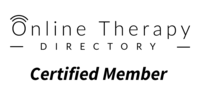Demystifying Therapy: Exploring Cognitive Behavioral Therapy (CBT) with Your Anxiety Therapist in Cincinnati
/Why would your therapist ask you about socks? Well, unless they’re a creep, it might be a way to explain the type of therapy they do. I use the socks example all the time to demonstrate how Cognitive Behavioral Therapy (CBT) works.
I use CBT in my practice because it’s evidence-based (science backs it up) in the treatment of anxiety and depression. I use other techniques along with it, but I like to start with this because it’s so helpful to pretty much everyone. I’m going to explain the basics of CBT to give you an idea of how it can help.
Unpacking the 'Sock Question': Understanding CBT Basics with Your Anxiety Therapist
Scenario: It’s a holiday or birthday, and you’re given a gift. You unwrap it, and discover it’s a pack of socks.
Question: What’s your reaction?
What we’re looking for is the first thought that goes through your mind, and then the feeling that follows.
I’ve gotten all sorts of responses to this one. When I worked with teens, the response was usually something like, “Socks?! But I wanted an Xbox!” They feel disappointed or mad. Following the feeling is the reaction or behavior. So the teen might say something rude, throw the socks, storm out, or get quiet.
For me personally, my first thought seeing the socks would be, “Yes!! I love nice socks, and needed some new ones!” I would feel excited and grateful. This just happened recently on Christmas, and I noticed my behavior was to thank the person and start opening them.
THESE ARE THE SOCKS. THEY’RE THE RIGHT THICKNESS AND SO SOFT!
The CBT Triangle: Thoughts, Feelings, and Behaviors Explained by Your Anxiety Therapist
The socks have no feelings attached to them. The “event” of opening a gift of socks doesn’t have a universal emotion. Socks aren’t good or bad. It’s how we think about the event that determines our feelings, and therefore our actions.
The “behavior” isn’t always a physical action that you do. It could be a symptom like crying, or a panic attack. It’s basically what happens when you feel that certain feeling. And that can therefore reinforce the original thought, or lead to more.
Therapists will often use a triangle drawing to demonstrate the cognitive model. You might notice that the incident doesn’t end with the behavior, but that the behavior can cycle you back through. Have you ever noticed how you can work yourself up about something, and keep going down the rabbit hole and get even more upset? The cycle isn’t always linear, either. The feeling can then trigger more thoughts, and so on.
Harnessing the Power of CBT: Practical Techniques for Mental Well-being
In CBT, we look at the content of our thoughts, and determine whether those thoughts are rational or helpful. If they aren’t, we develop alternative thoughts to replace the ones causing distress. With anxiety or depression, our thoughts tend to be distorted in a negative way.
The work is done by using worksheets in between sessions so you can catch yourself in the moment. Over time, you’ll start breaking those unhelpful thought habits and retrain your brain to think more rationally. You’ll also become more mindful of how you’re responding to triggers, which gives you the chance to make a choice in what you’ll do.
This is a basic overview of the process of Cognitive Behavioral Therapy in my counseling practice. Of course it gets deeper than that, but I find it’s super helpful for everyone to learn about.
Even if you don’t have anxiety or depression, we all have thoughts that drive our feelings and behaviors, and it can really help to be aware of them. Practicing CBT techniques can help you deal with stress, improve your relationships, and even help with road rage!
Ready to explore CBT techniques for managing anxiety or depression? Click here to schedule a free 15-minute phone consultation with and online anxiety therapist in Cincinnati to discover how CBT can support your mental health journey. Online counseling in Indiana and Ohio. Or call/text 513-461-2045.





